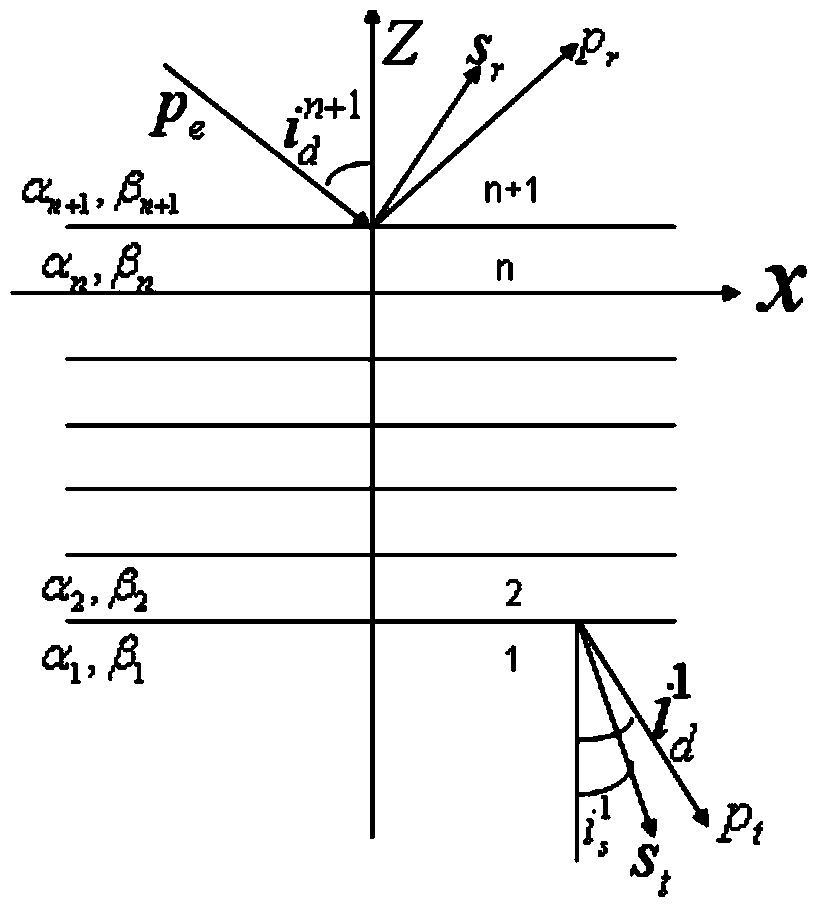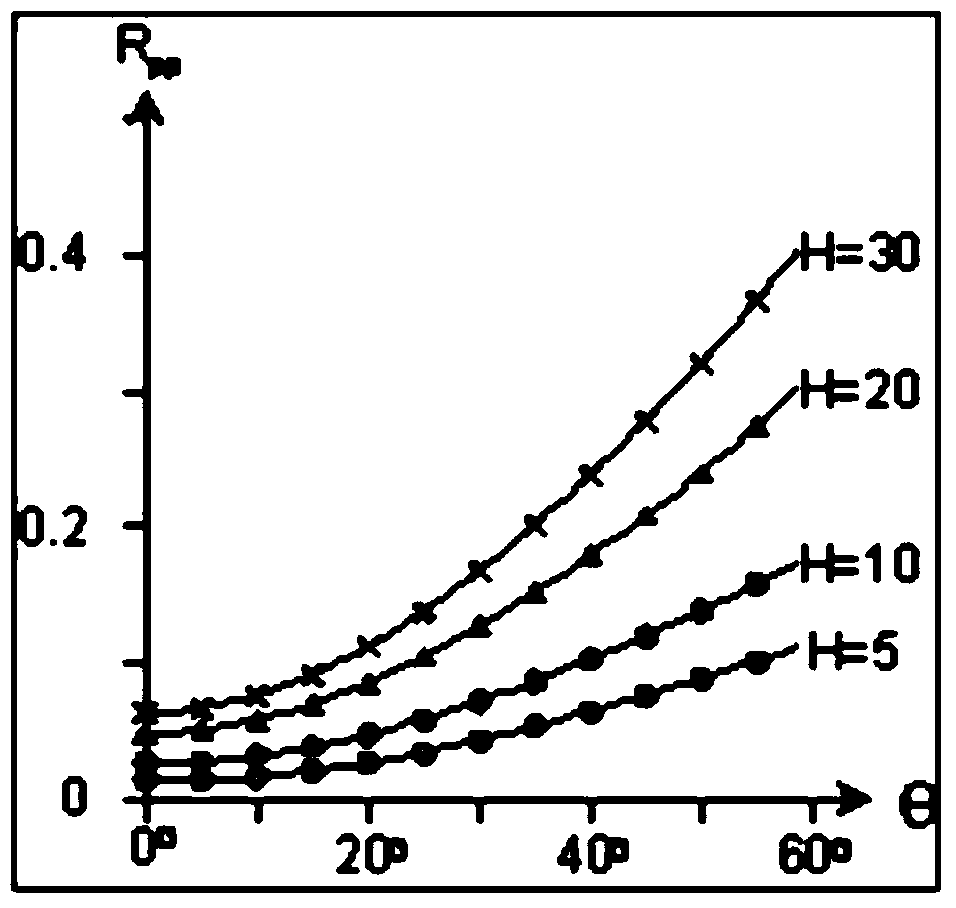Method for calculating plane wave reflection coefficients in elastic multi-layered medium
A multi-layer medium and reflection coefficient technology, applied in seismic signal processing and other directions, can solve problems such as low calculation efficiency, low simulation accuracy, and difficulty in reflecting thin layer effects
- Summary
- Abstract
- Description
- Claims
- Application Information
AI Technical Summary
Problems solved by technology
Method used
Image
Examples
Embodiment Construction
[0097] In order to make the technical means, creative features, goals and effects achieved by the present invention easy to understand, the present invention will be further described below in conjunction with specific embodiments.
[0098] The conventional Zoeppritz equation calculates the reflection coefficient based on a single interface and has no thickness variable. Although it can also calculate AVO characteristics, it cannot directly analyze the effect of thickness on each frequency component. The plane wave reflection coefficient of elastic multilayer media fully considers the effects of multiple waves and converted waves of the elastic layer system and the thickness and frequency on the reflection coefficient, so it is more suitable for AVO analysis and forward modeling of thin layers and thin interlayers. Therefore, the present invention introduces the plane wave reflection coefficient in the elastic multi-layer medium and the forward calculation method in detail, and...
PUM
 Login to View More
Login to View More Abstract
Description
Claims
Application Information
 Login to View More
Login to View More - R&D
- Intellectual Property
- Life Sciences
- Materials
- Tech Scout
- Unparalleled Data Quality
- Higher Quality Content
- 60% Fewer Hallucinations
Browse by: Latest US Patents, China's latest patents, Technical Efficacy Thesaurus, Application Domain, Technology Topic, Popular Technical Reports.
© 2025 PatSnap. All rights reserved.Legal|Privacy policy|Modern Slavery Act Transparency Statement|Sitemap|About US| Contact US: help@patsnap.com



